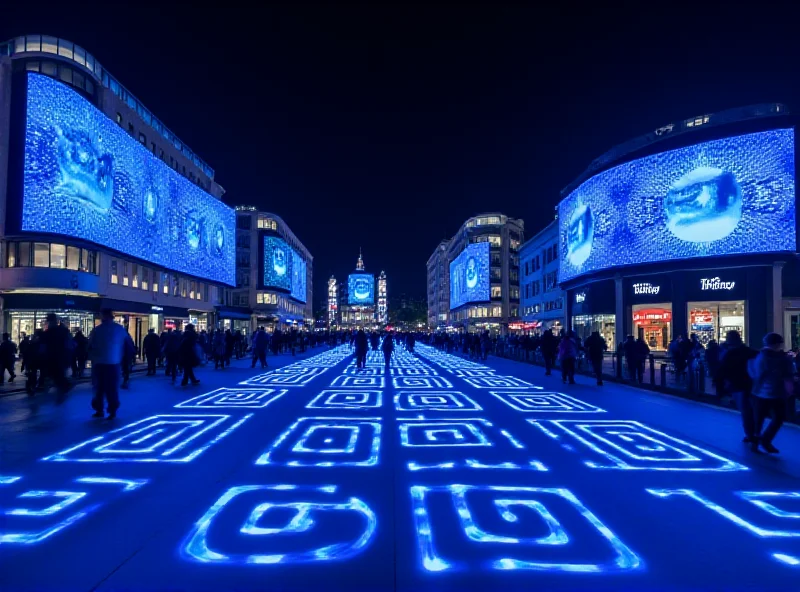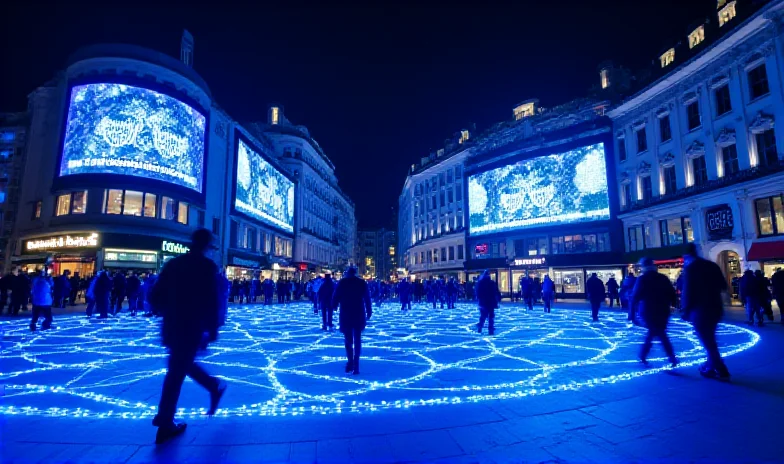Ramadan, the holy month observed by Muslims worldwide, is a time of reflection, prayer, and community. This year, celebrations are taking place across the globe, showcasing the diverse ways in which the month is honored. But alongside the joyous festivities, Ramadan also sparks important conversations about artistic expression and cultural sensitivities.
Global Celebrations
In London, Piccadilly Circus has been transformed into a dazzling display of Islamic art. For the third year running, the iconic location is illuminated with 30,000 LED bulbs arranged in intricate Islamic geometric patterns and symbols. Mayor Sadiq Khan led the celebrations, highlighting the city's commitment to inclusivity and cultural diversity. "It's wonderful to see London embracing Ramadan in such a spectacular way," said one attendee.

Meanwhile, in Indonesia, millions of Muslims are marking the start of Ramadan with traditional festivities. Markets are bustling with people shopping for sweets, new clothes, and decorations, adding to the vibrant atmosphere. The air is filled with the sounds of traditional music and the aromas of delicious foods, creating a sense of unity and joy.
Even in Gaza, despite ongoing challenges, communities are coming together to share Ramadan feasts, demonstrating resilience and solidarity during this sacred time. The Guardian has curated a photo gallery showcasing images from Gaza and around the world, capturing the essence of Ramadan in its diverse forms.
Artistic Freedom vs. Censorship
However, Ramadan isn't just about celebrations. In the Arab world, the month often brings heightened scrutiny of television dramas and artistic expression. Debates rage over what constitutes acceptable content, raising questions about censorship and artistic freedom.

Majda Bouazza is among those who have voiced concerns about artistic works that allegedly cross "red lines," calling for their banning. On the other hand, some critics challenge specific episodes of Ramadan dramas based on "rights-based" considerations. This creates a tension between those who believe in protecting cultural sensitivities and those who advocate for greater artistic freedom. Is censorship a necessary measure to prevent "sedition" and controversy, or is it an oppressive act that stifles creativity?
These debates highlight the complexities of navigating cultural norms and artistic expression during Ramadan. As one commentator noted, "The challenge lies in finding a balance between respecting cultural values and allowing artists the freedom to explore and challenge societal norms."
Finding a Balance
The discussions surrounding censorship during Ramadan serve as a reminder of the ongoing need for dialogue about artistic freedom and cultural responsibility. While some argue for stricter regulations to maintain cultural values, others advocate for greater openness and tolerance in the arts. Ultimately, the goal should be to foster an environment where artists can express themselves freely while respecting the diverse perspectives and sensitivities within society. The illumination of Piccadilly Circus and the celebrations in Indonesia represent the positive aspects of Ramadan, but the debates surrounding censorship remind us of the complex issues that arise during this holy month.

"The challenge lies in finding a balance between respecting cultural values and allowing artists the freedom to explore and challenge societal norms."
Ramadan, therefore, is not just a period of religious observance, but also a time for reflection on the role of art and culture in shaping society and fostering understanding.
